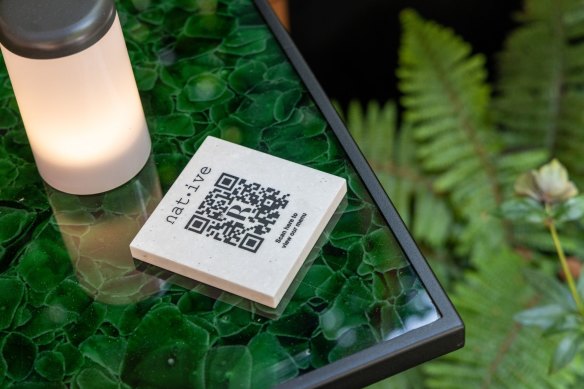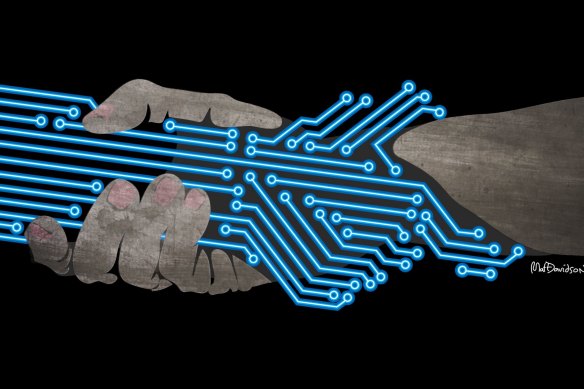
The food was delicious – an exotic take on French toast, a reworking of the bacon and egg roll, a fried chicken burger genuinely finger-lickin’ good. The dining experience, however, was soulless. Or, more accurately, largely human-less. You know the drill. Rather than being presented with a menu, a staff member pointed us towards a disc embedded in the table with the now familiar chequerboard of black and white squares.

QR code menus remove the need to speak to an actual human being.Credit: Bloomberg
Rather than verbally giving our order, we had to tick boxes on an online menu. Once our personal data had been harvested, and a pre-emptive tip solicited, our food was delivered not long afterwards, rich in flavour but lacking the nourishment of human interaction.
Cheap fast food joints already offer us the representation of food. I worry that cafes and even good restaurants are going down the same path, offering us the representation of a dine-in experience. Such is virtual life in the post-COVID world of QR codes, Zoom, LinkedIn and Slack.
Social distancing continues to be a problem even as we have moved beyond the worst days of the pandemic, and noticeable is the mounting sense of nostalgia for the time when interactions happened face to face rather than in boxes on a screen.
Recently, New York Times columnist Maureen Dowd penned a requiem for the newsroom, a column bemoaning how the work-from-home culture posed a threat to our very tradecraft. Along with the sight of reporters throwing tantrums, and sometimes their typewriters, Dowd missed the “incredible camaraderie and panache” of producing a daily newspaper, and was mystified that so many 20-something colleagues preferred to WFH. As someone whose first job was at a British tabloid – sat opposite a chain-smoking industrial correspondent, whose daily emissions were almost on a par with the dwindling numbers of industries left for him to cover – I found myself nodding in agreement. From watching and listening did I learn.

The forthcoming AI revolution has been likened to the industrial revolution and digital revolution happening simultaneously.Credit:
More than 20 years after Harvard academic Robert D. Putnam published his seminal study, Bowling Alone: The Collapse and Revival of American Community, with its warning about the threat posed to civil society by individualism and atomisation, a follow-up, Working Alone, could easily be penned on the shift away from the community of the workplace.
Our lack of human interaction is only part of the problem. More worrying is the disappearance of human involvement altogether. Artificial intelligence could replace the equivalent of 300 million full-time jobs, according to a new report from Goldman Sachs, and a quarter of the work tasks currently performed by humans in the US and Europe.
While also creating new jobs and driving productivity gains, generative AI could do to the white-collar sector what automation has done to blue-collar jobs since the early 1970s. The forthcoming AI revolution has been likened to the industrial revolution and digital revolution happening simultaneously. This time, the knowledge workers of the so-called “laptop class” are likely to find themselves in the firing line, both figuratively and literally.



























